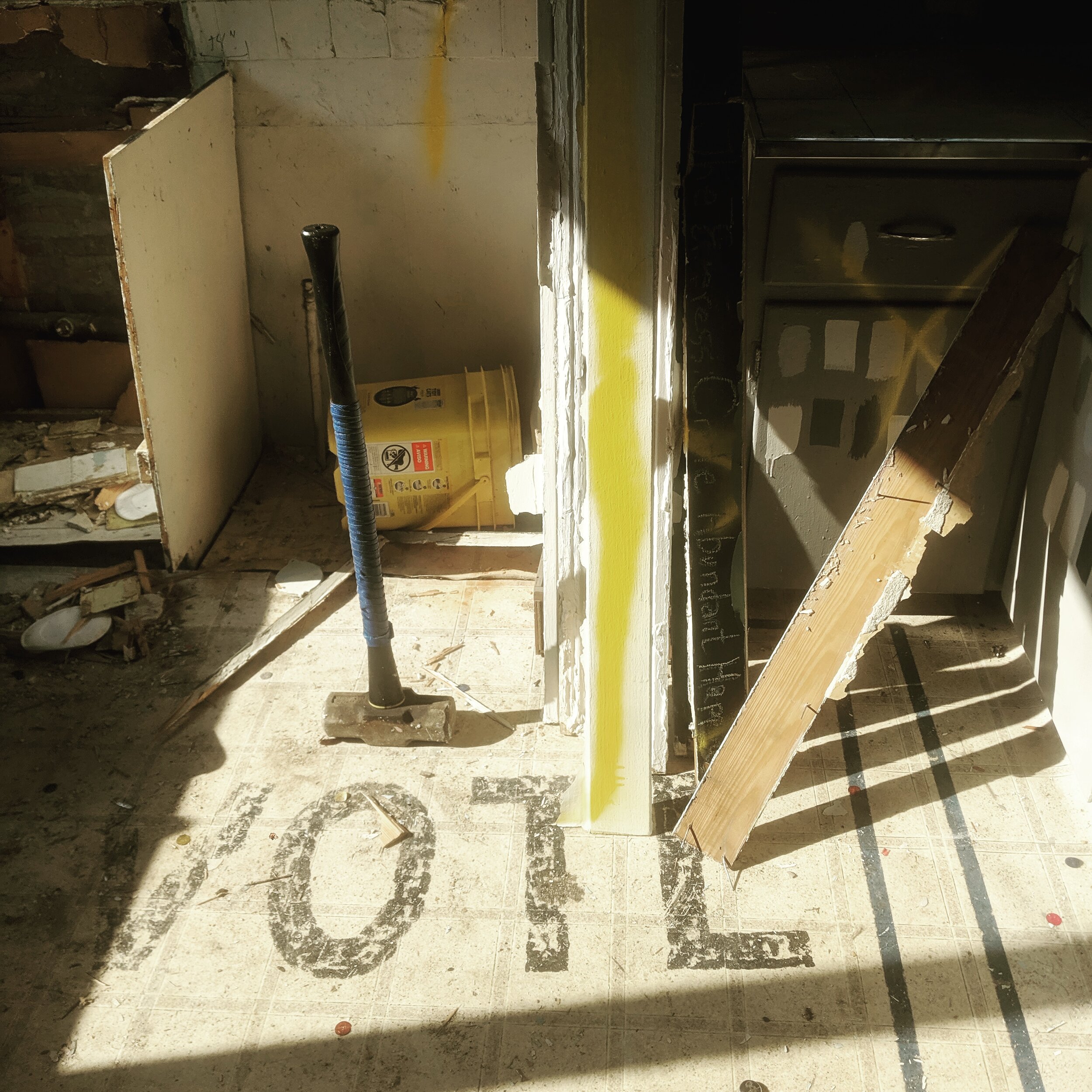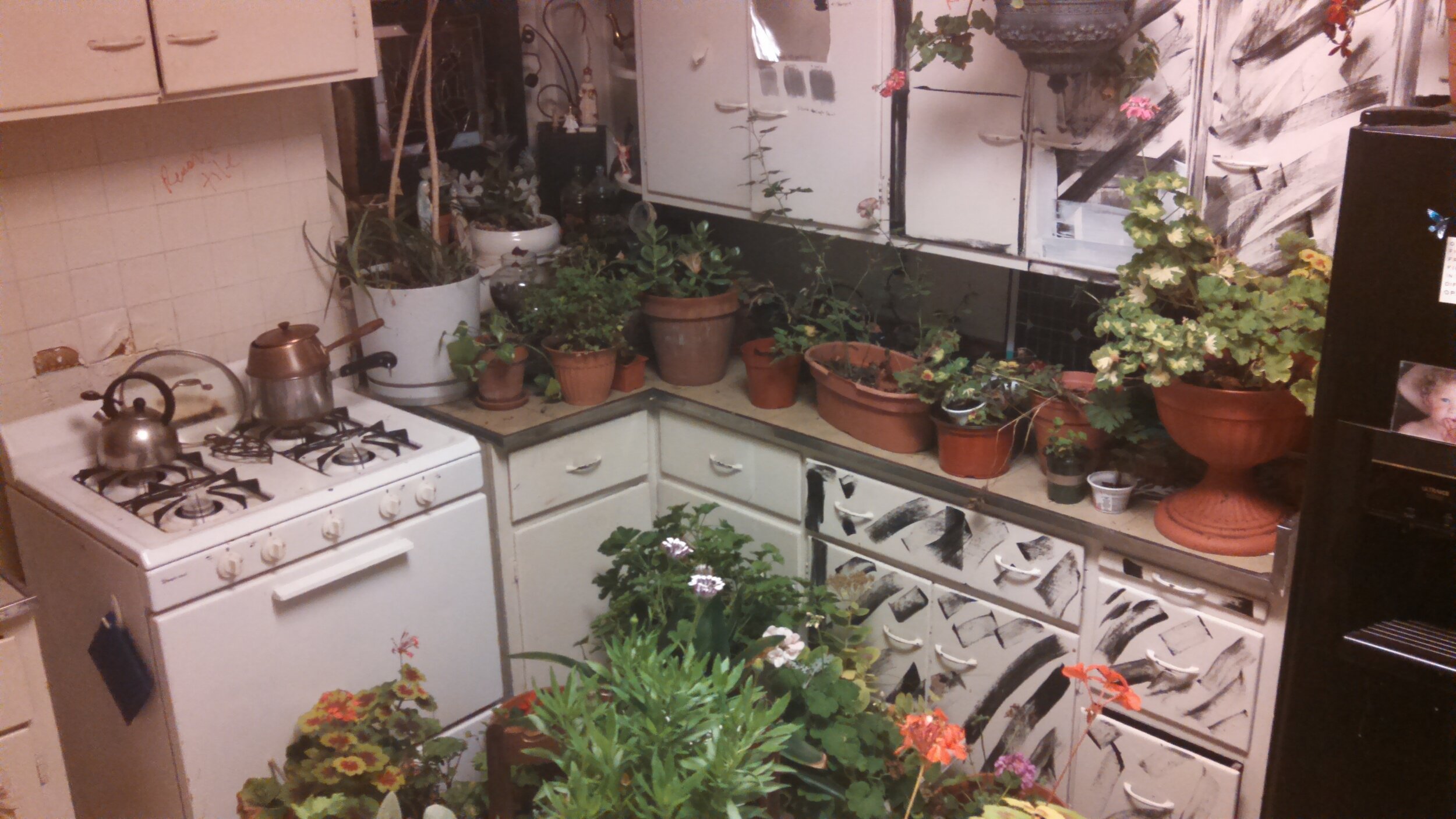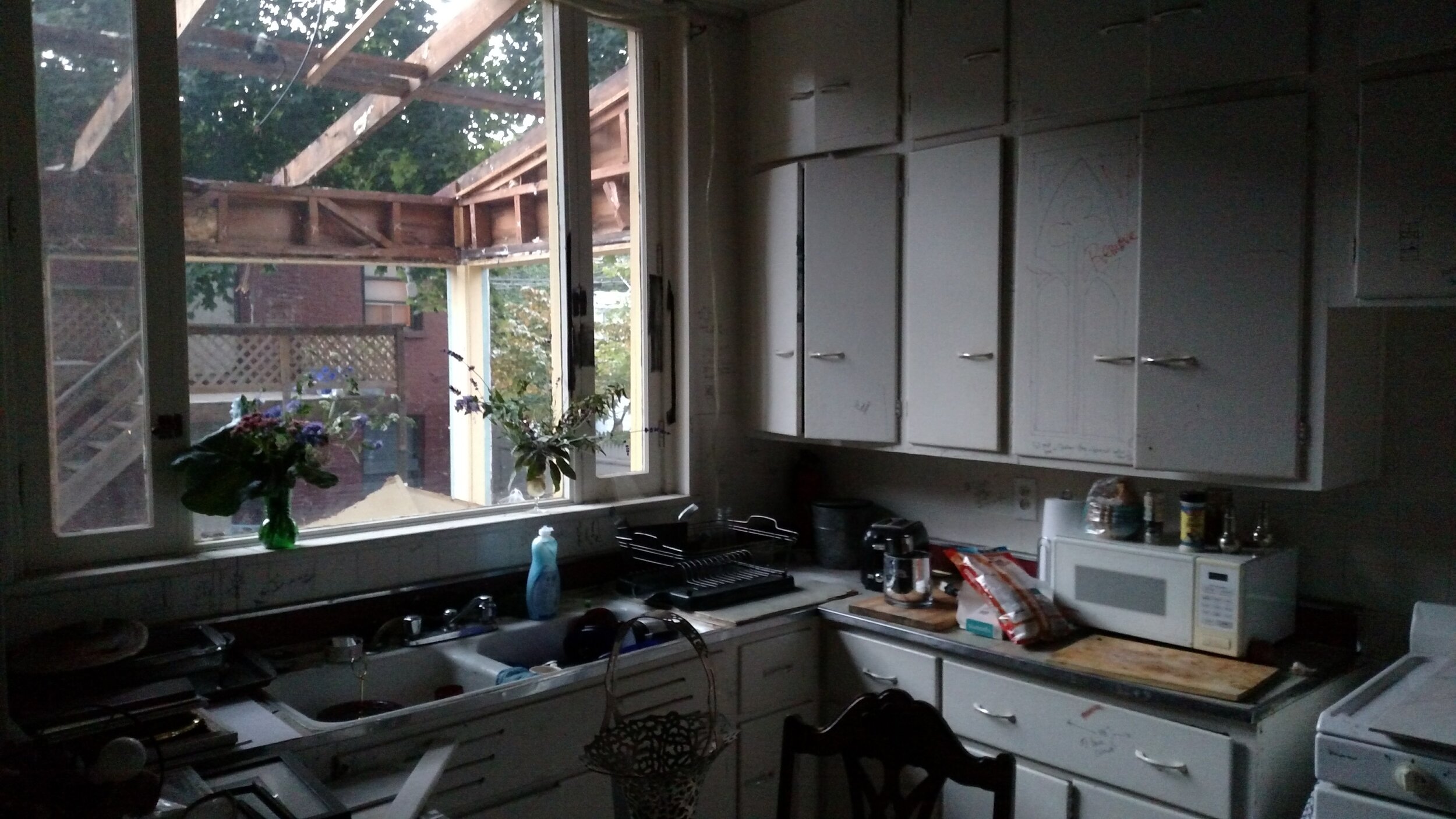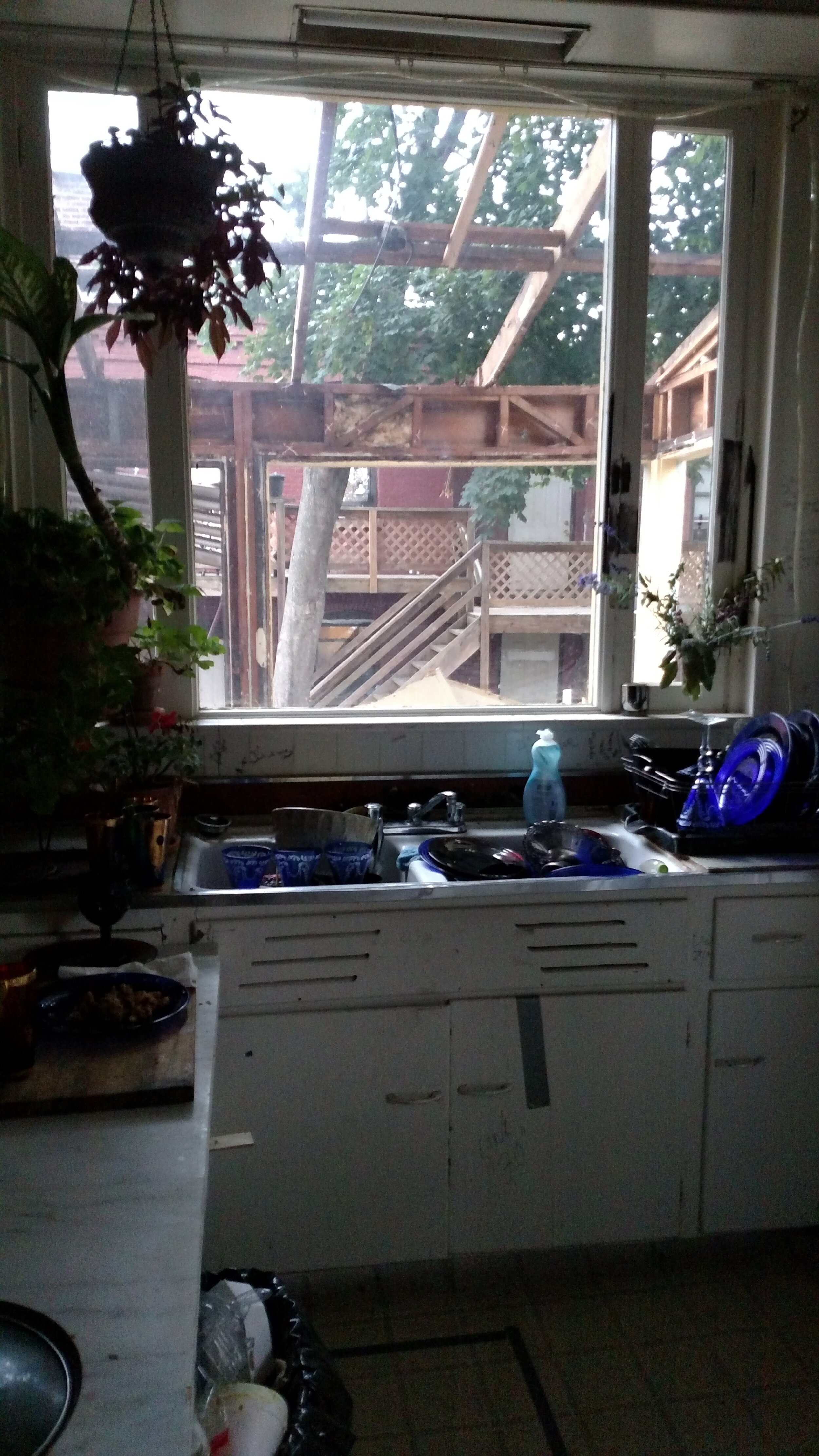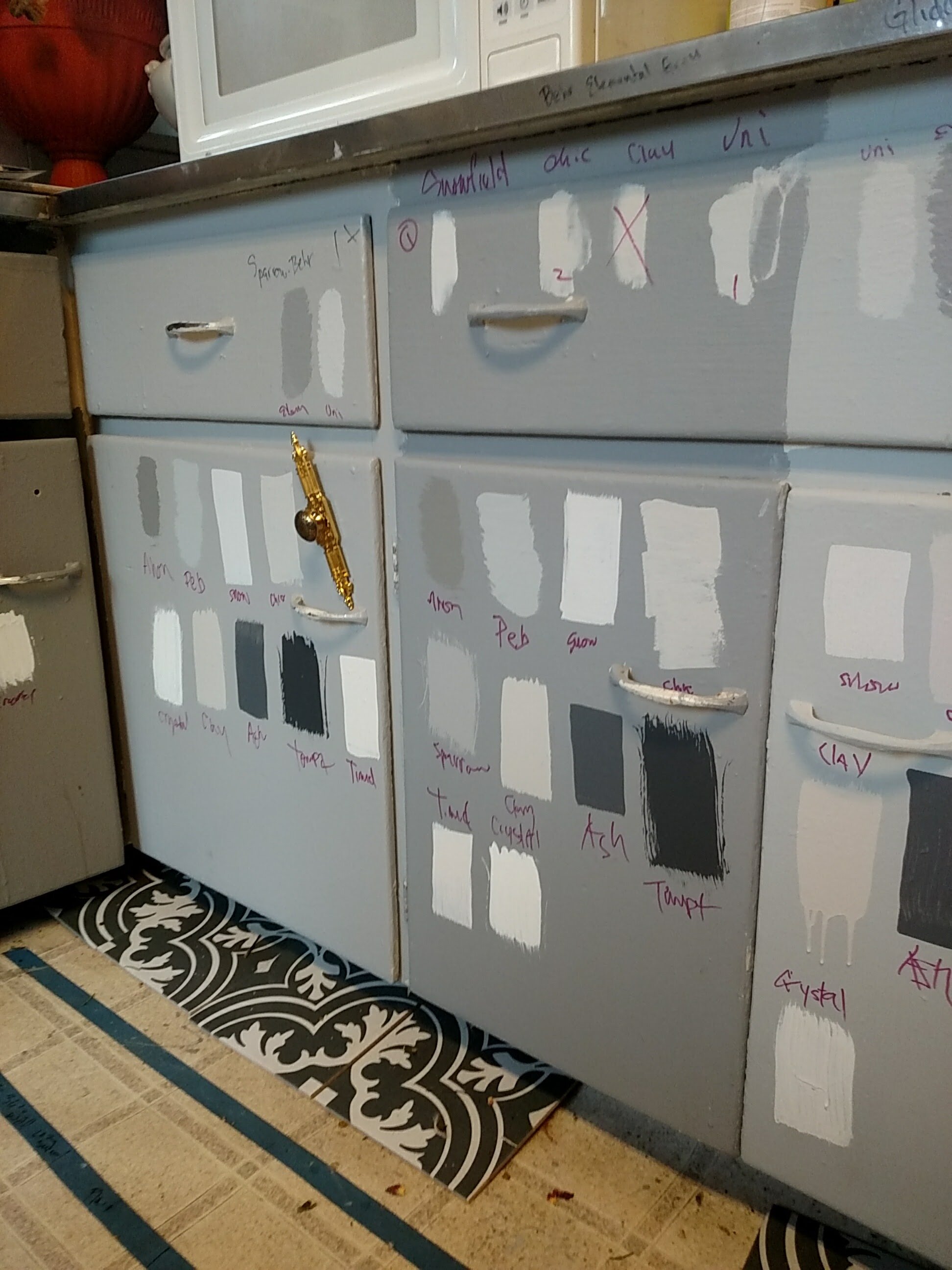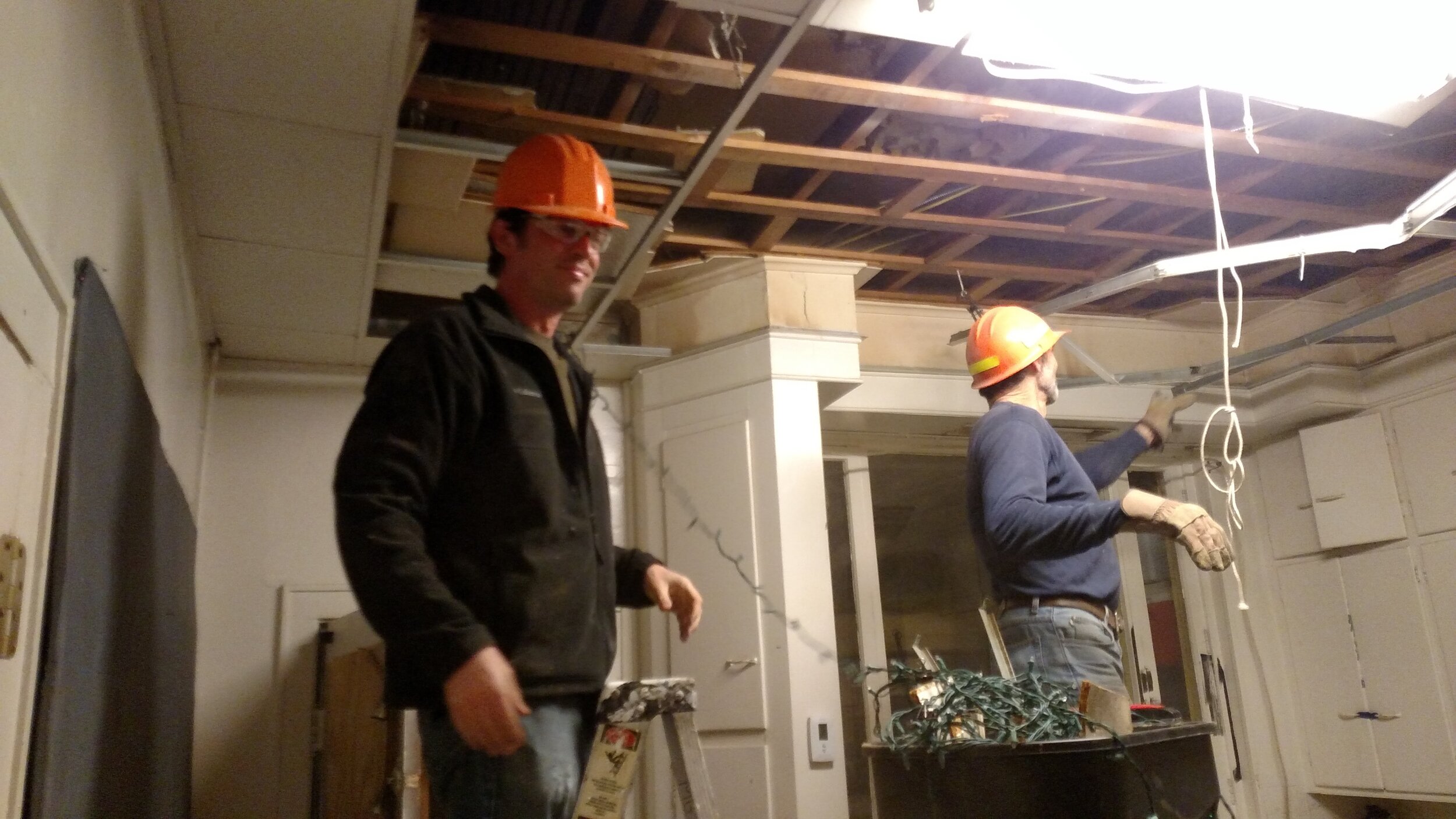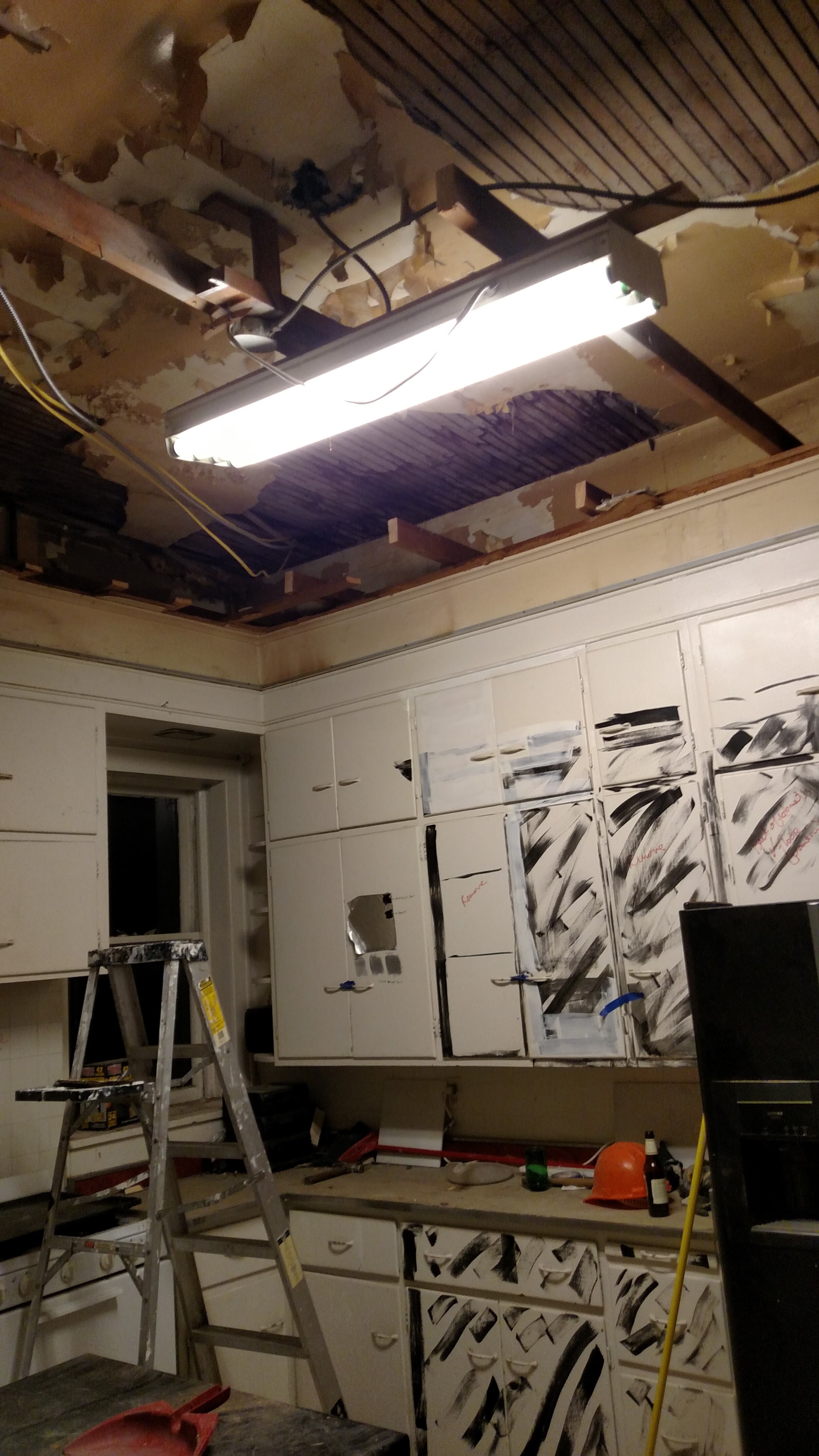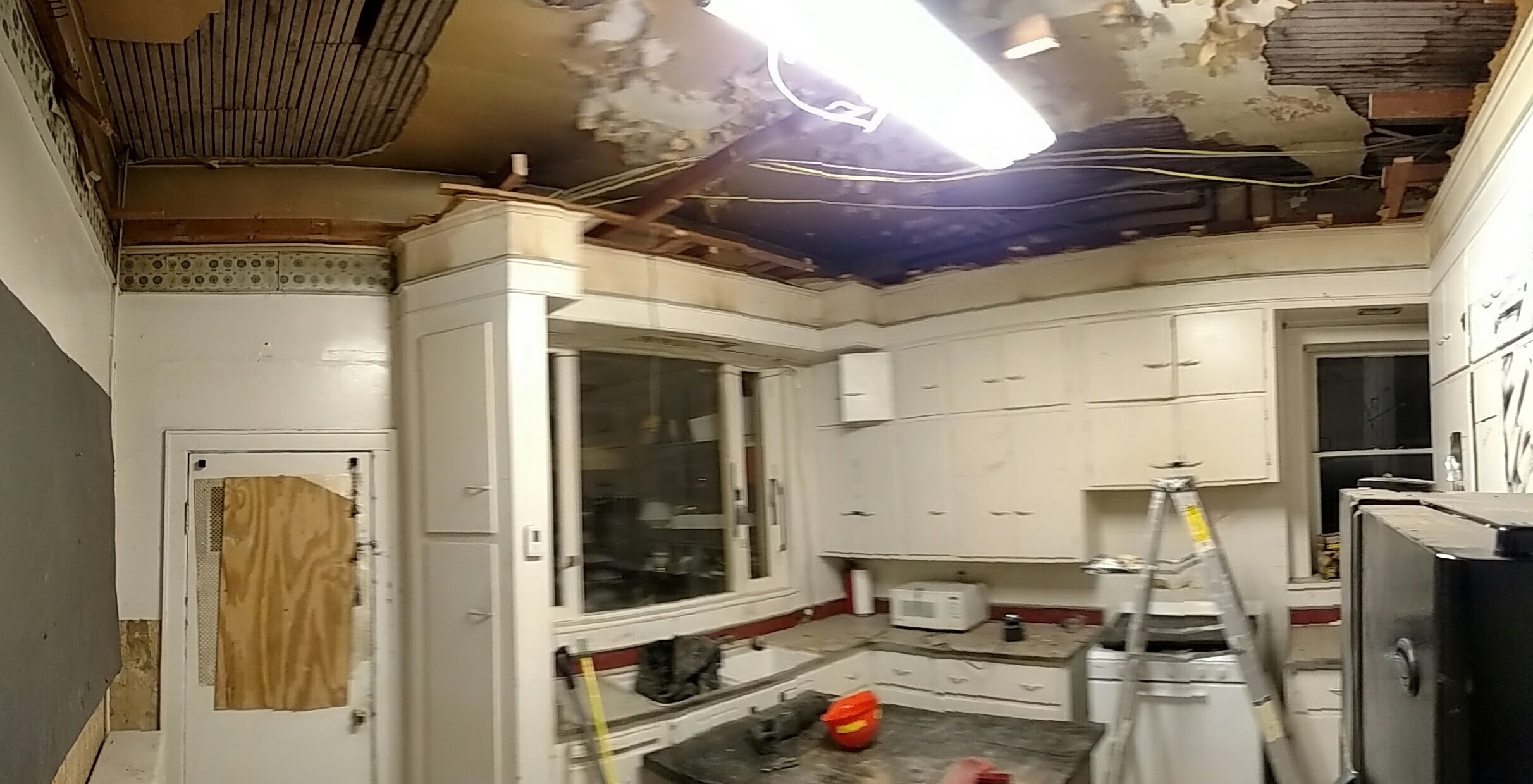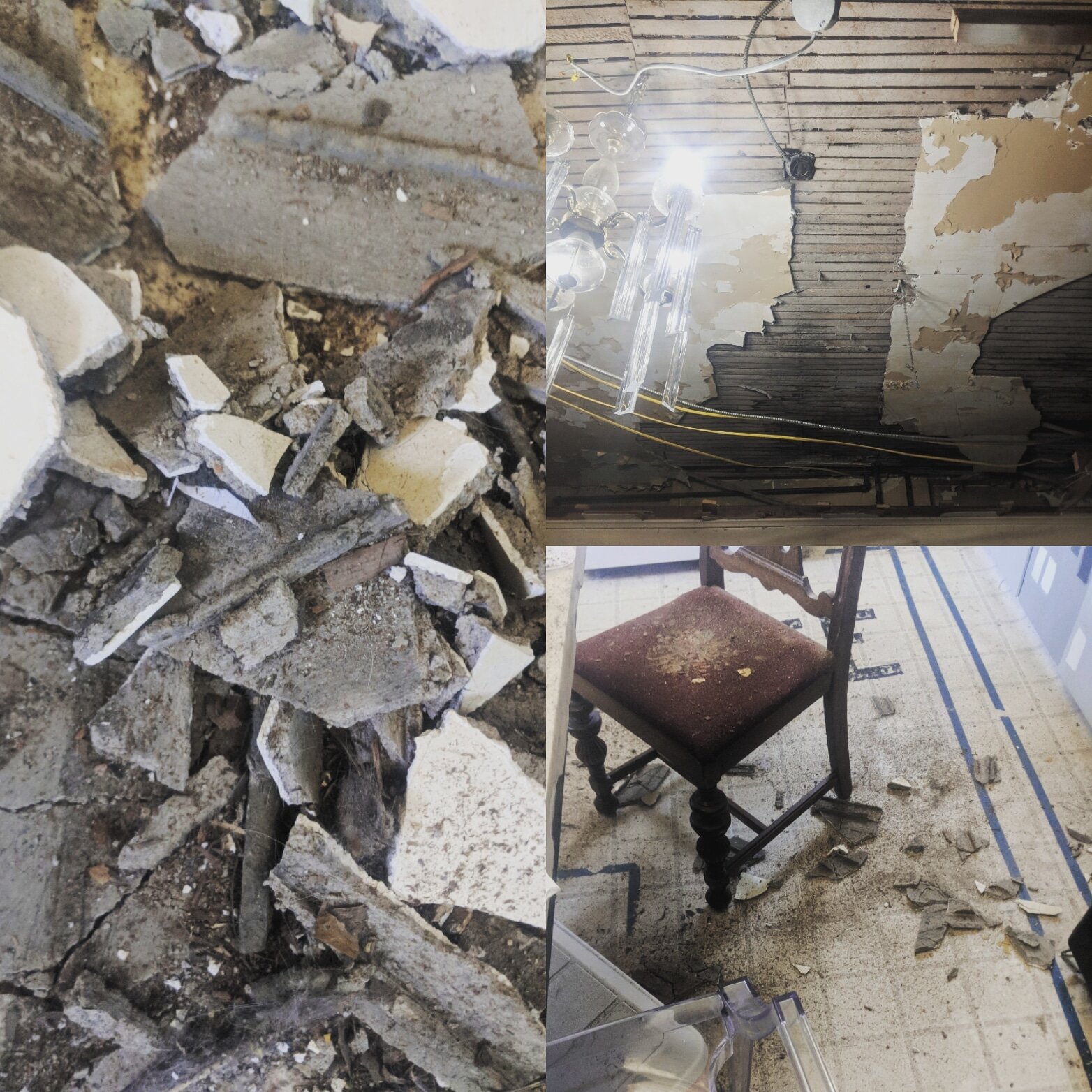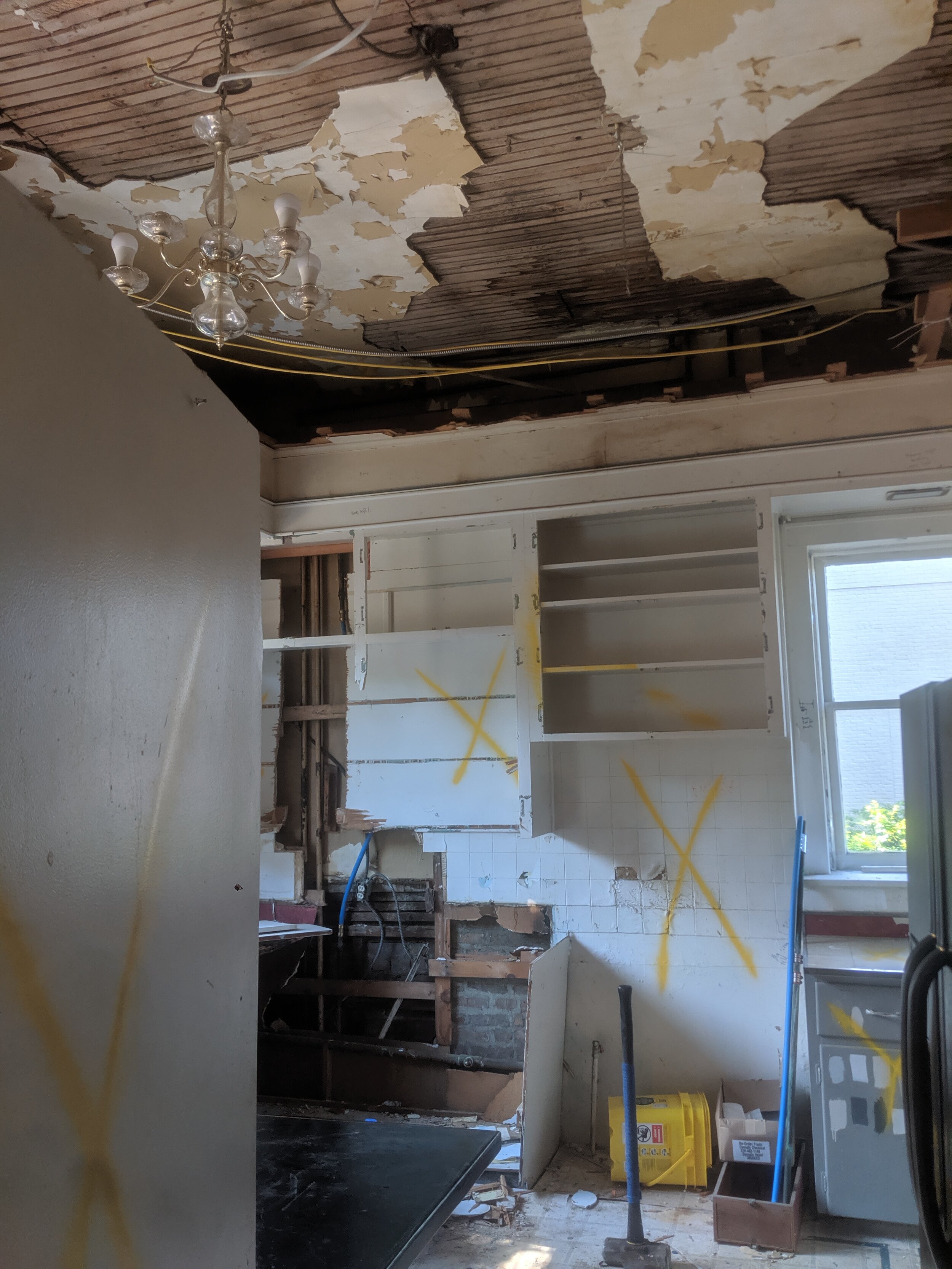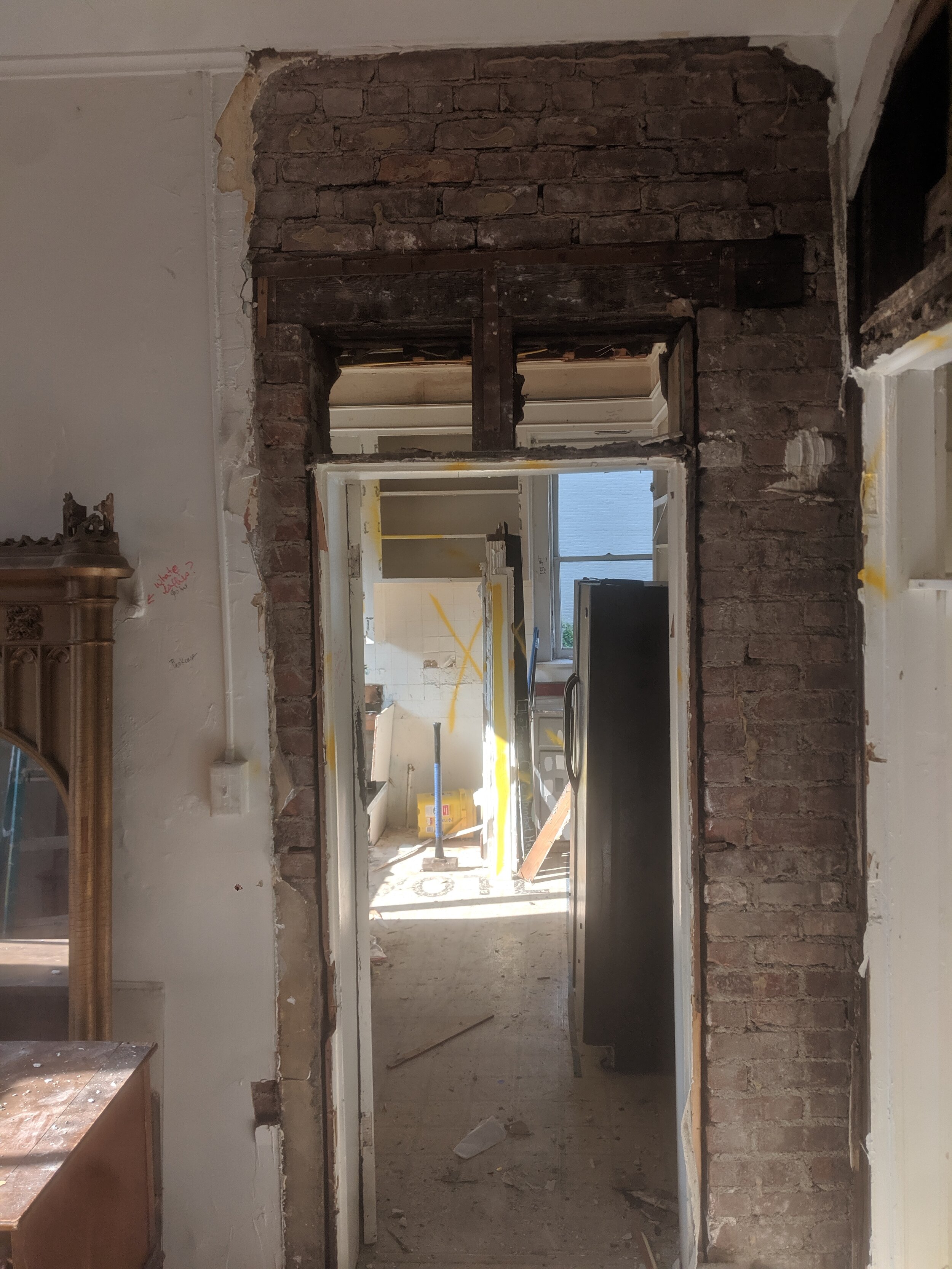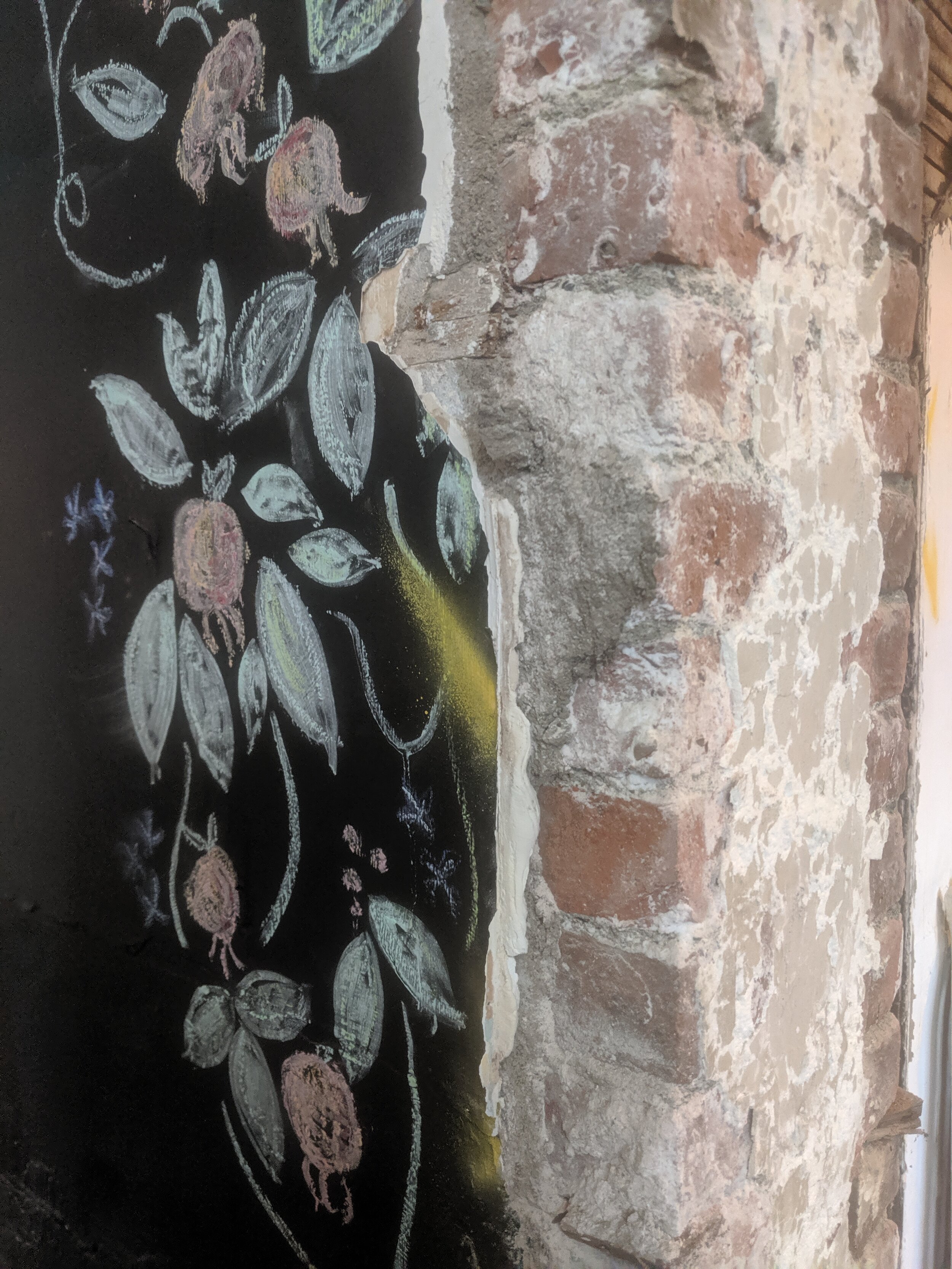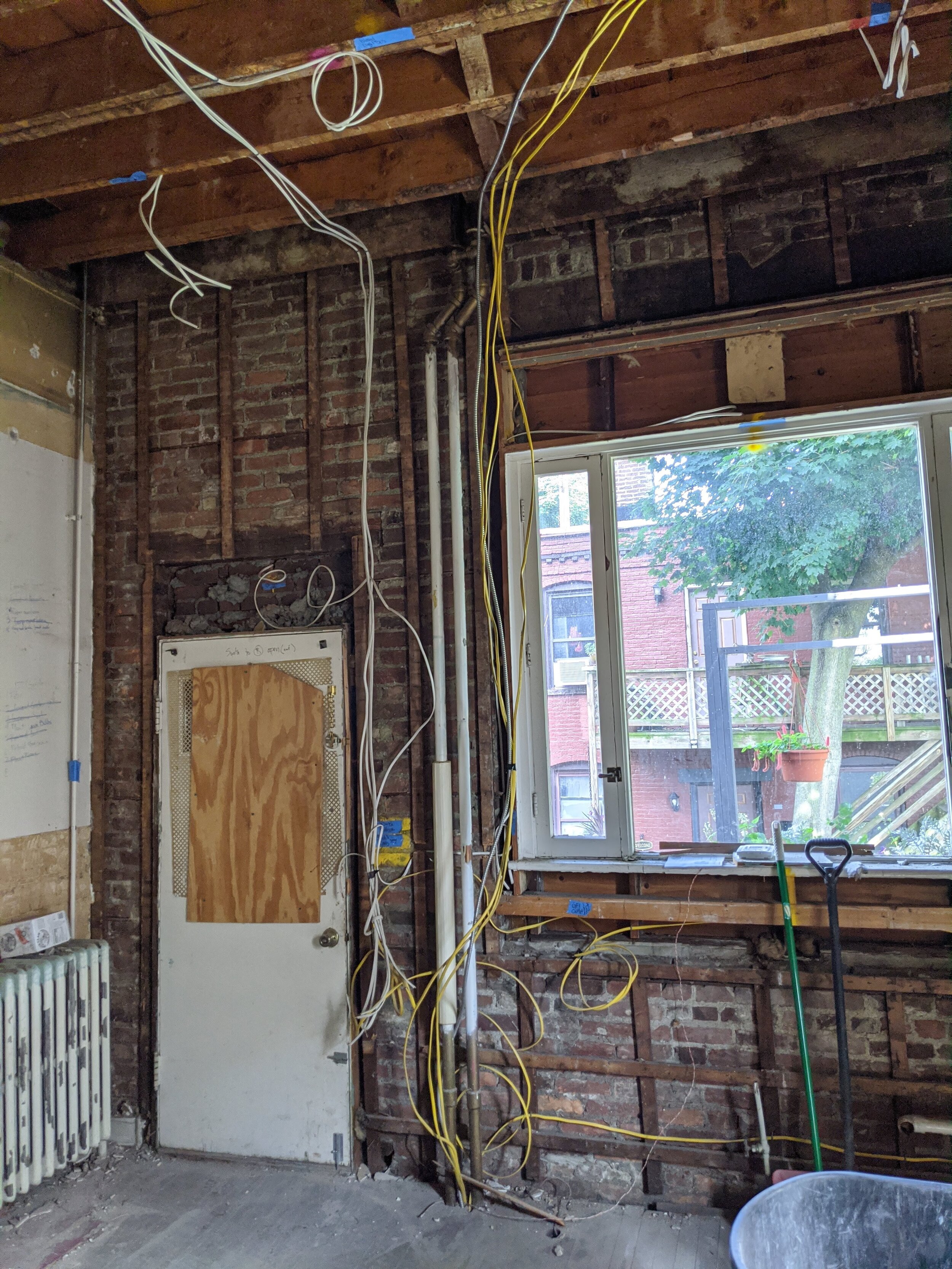Pictures are worth a 1000 words and show evolution. Let’s start with the kitchen.
At the rear of the house, bathed in morning light the kitchen is always a gathering place to start and end the day. Mine was remodeled in the 1950s (I think) with strong plywood cabinets, a large picture window, plastic tile and blues and teals. Ceilings dropped from 11’ original plaster over lathe to a wooden grid 2 feet below. Later, the ceiling was lowered to about 8’ with an office style dropped ceiling, lit with a florescent panel.
Each level of the ceiling began come down until a 2015 party took it away. The scale of the room returned a vision of its future became clearer.
Mid-Century Modern Rebellion
As a Wisconsin native, Frank Lloyd Wright influenced my understanding of innovative American architecture. He was innovative, creative and compelling. He also was an arrogant dictator with beliefs mirroring Ayn Rand’s overly individualistic (selfish) worldview but applied to the built environment. FLW is part of the reason Robert Moses destroyed NYC and Troy narrowly avoided a highway crushing the life from the city. He is suburbia and his roofs leak.
However, our understanding of 19th century buildings in the 20th century is very different from 70-80 years ago. Sanborn Fire Insurance Maps illustrate the decline of neighborhoods like mine. Redlining sped their decline as banks wouldn’t loan the money needed to keep buildings alive. Style changed and ornamentation fell from fashion for plain and restrained style. Vinyl siding. Carpet over hardwood. Some love it—I find it lacks a sense of humor and is conformist. Shiplap is the devil (fight me). Open concept is pandemic hell.
This mid-century shift created a modern envelope in my fussy victorian palace. The kitchen ceiling dropped from 11’ to 9’. Greek key window trim was ripped away for a soffit with ceiling to floor curtains hiding stained glass windows. Abandoned curtain rods stretched across the walls in the living room keeping elegant trim veiled behind more curtains. To their credit, the teal, kelly green and baby blue colors were bold and I have a soft spot.
Naturally, I’m horrified and extremely judgey about these choices. They are not to my taste*. But intellectually I understand the desire to reject the old for the new. We get bored. We have mixed emotions about the past and purging the old is a type of therapy.
I’m also not recreating 1886. I want to be strategic. The missing history returns in trim, proportion, floor plan and salvage. The 19th century inspires the library and office. But extremely personal touches—wallpaper, color and decor are here while I am here. The liminal space of the kitchen will always be one that changes with technology and use.
*Midwest translation: Fucking horrible
Renovation and Restoration: Before the Beginning
In 2008, I bought the worst house on the best block and knew I would transform it. For over ten years, the garden, tenants’ apartments and exterior of the house have been brought back to life. My own apartment on the first floor…well…as friends and family can attest—it’s a hot mess. But it’s time.
The Plan: Over the coming months, the first floor is returning to its 19th century floor plan. The quirky all baby blue 1950s bathroom remains and gets light and the influence of Mama Kitty, my grandmother’s sense of style. The kitchen will combine practicality and ever changing artwork. The library will evoke Victorian lushness with wood, leather, warmth and comfort. The living room will be the airy formal space for intense conversation over drinks and take-out. The office will be my homage to James McNeill Whistler’s Peacock Room. The studio’s tumbling always in process projects will framed in glass. The hallways will be surreal—an enchanted forrest and glittering disco. The bedroom will be a quiet nest.
There are Pinterest boards, scrapbooks, mood boards, instagram posts, paint chips, tile samples, books and binders of plots and plans. There’s a budget. There’s a hoard of stuff collected over the years. There is also house and people history to tell the story of one house in a small American city.
If you know me, you know it’s not going to look like anything else. If you don’t yet know me—get ready.
